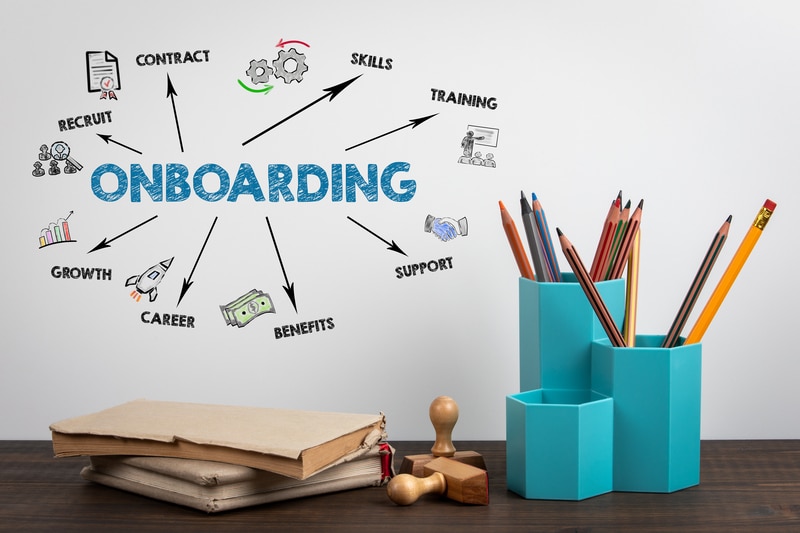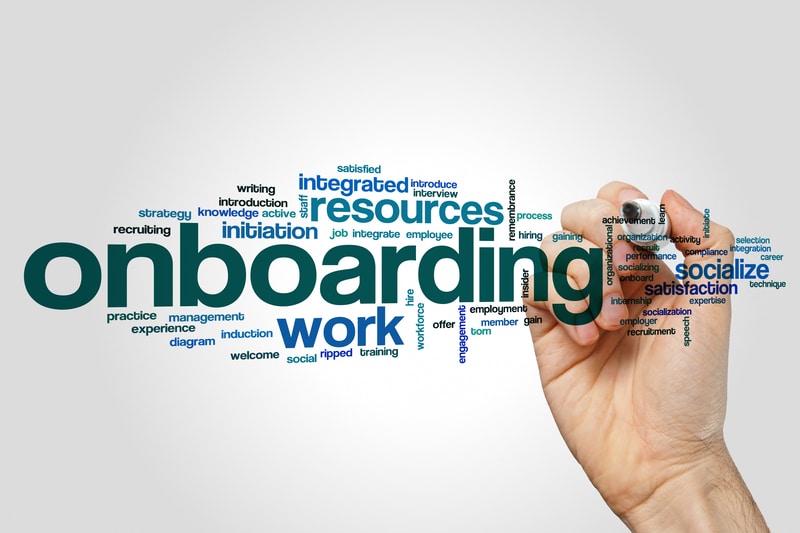Career Advice
This Article Talks About:
Home » Help and Advice for Employers • Recruitment Advice » The Importance of an Employee Onboarding System
The Importance of an Employee Onboarding System
https://www.whatjobs.com/info/employers-advice/recruitment-advice-for-employers/the-importance-of-a-good-employee-onboarding-system

Employee onboarding is the process of introducing new employees to the social and performance aspects of their new job.
The goal is to quickly adjust them, increase productivity and job satisfaction, and reduce turnover.
Onboarding can be a critical step in setting new hires up for success.
It starts from the moment a candidate accepts a job offer.
Employee onboarding systems can help businesses streamline and improve their onboarding process.
These systems typically include technology tools and resources that can help automate and organize various aspects of the onboarding process.
These include collecting documentation, providing training and orientation materials, and facilitating communication between new hires and their managers.
Benefits of a Successful Employee Onboarding
Consistent Training
One of the main benefits an employee onboarding system is it can help ensure a consistent experience for new hires.
It means businesses can ensure all new employees receive the same training and support, regardless of their department or position.
This can help to improve job satisfaction and engagement and can reduce turnover rates.
Save Time and Resources
Employee onboarding systems can also help businesses to save time and resources.
By automating many of the onboarding tasks, businesses can reduce the workload for managers.
This helps free up time for tasks like developing training materials and one-on-one support to new hires.
Improved Compliance
Another important benefit of employee onboarding systems is that they can help to improve compliance and reduce legal risk.
Providing new staff the information and training they need, businesses can reduce the risk of legal and financial consequences.
Tracking the process also means business can provide evidence in the event of an audit or legal challenge.
Onboarding systems can also be a critical tool for setting new hires up for success.
Businesses can help to improve job satisfaction and engagement by providing staff with the tools and support they need.
This can help to reduce turnover rates and improve overall employee retention.
Boost Brand Image
Finally, employee onboarding systems can be an important tool for businesses looking to improve their employer brand.
By providing a positive onboarding experience for new hires, businesses can help to improve their reputation as an employer of choice.
This can help to attract top talent and improve the quality of the candidate pool for future job openings.
How to Onboard Employees Effectively
Here are some steps you can follow to onboard employees effectively:
Prepare for the new employee’s arrival
This step is crucial to ensure that the employee’s first day goes smoothly and sets the tone for a positive onboarding experience.
Here are some of the tasks you should focus on during this step:
Prepare the necessary paperwork
As an employer, you will need to complete a variety of employment forms for your new hire, such as a W-4 form for tax withholding and an I-9 form to verify their eligibility to work in the United States.
Before the employee’s first day, ensure that you have all the required forms and fill them out correctly.
Provide access to software and hardware
Make sure the employee has access to the software and hardware they will need to do their job.
This may include setting up their email account, providing access to company software and tools, and providing a computer and other necessary equipment.
Coordinate with other departments
Depending on the nature of the employee’s job, you may need to coordinate with other departments to ensure everything is in place for their arrival.
For example, you might need to work with the IT department to set up the employee’s computer and access to systems, or with the facilities department to ensure their workspace is ready.
Communicate with the employee
Before the employee’s first day, communicate the company’s HR policies them to let them know what they should expect on their first day, where they should go, and who they should contact if they have any questions.
The company should also inform them about benefits enrollment, such as health insurance, retirement plans, and other perks that may be offered.
Make sure you provide clear instructions and a point of contact to ensure that the employee feels welcome and supported.
Welcome the employee
This step helps create a positive first impression and making the employee feel welcome and valued. Here are some of the tasks you should focus on during this step:
Meet the employee on their first day
Make sure you are available to meet the employee on their first day. Greet them warmly and show them to their workspace.
This will help to set a positive tone for the rest of the day and the onboarding process.
Provide a tour of the office
Show the new employee around the office and introduce them to their colleagues.
This will help them to feel more comfortable and get a sense of the company culture. Make sure you point out any important areas, such as the break room, restrooms, and emergency exits.
Explain the company culture and values
Explain the company’s culture and values to the new employee and give them employee handbook. This will help them to understand what is important to the company and how they can contribute to its success.
Be sure to emphasize the company’s mission, vision, and core values, and explain how these values are reflected in the company’s daily operations.
Explain the employee’s role and responsibilities
Provide a clear explanation of the new employee’s role and responsibilities.
Ensure you emphasize the company’s mission, vision, and core values, and explain how these values are reflected in the company’s daily operations.
Be sure to explain how their role fits into the company’s overall structure and goals.
Provide an overview of the company
Provide an overview of the company’s history, products or services, and current state. This will help the new employee to understand the company’s place in the market and how they can contribute to its success.
Schedule any necessary meetings
Schedule any necessary meetings with other team members, managers, or departments that the employee will be working with. This will help the new employee to start building relationships and establish communication channels.
Provide training
By providing proper training, employees understand their job responsibilities, company policies, and the skills they need to perform their job successfully.
The first important one here is job-specific training that should covers the skills and knowledge the employee needs to perform their job successfully.
This may include product training, software training, or technical training.
Also, let them know about the company’s policies and procedures.
This will help them gain an understanding of what is expected of them in terms of conduct, safety, and security.
Many employers give culture training which will include company’s culture, values, and mission.
Another major step is to inform them about legal or regulatory requirements. The compliance training includes safety training, data privacy training, or anti-harassment training.
Use a variety of training methods to ensure that the employee learns in the way that works best for them. This may include classroom training, online training, on-the-job training, or mentoring.
Assign learning resources to the employee, such as manuals, videos, or online courses. This will allow them to continue learning and developing their skills beyond the initial onboarding process.
Assign a mentor
Assigning a mentor involves matching a mentee with an experienced individual who can provide guidance, support, and advice in a specific field or area of interest.
The mentor should have relevant knowledge and expertise that can benefit the mentee in achieving their personal or professional goals.
Here are some steps that can be followed when assigning a mentor:
Identify the mentee’s goals
The first step in assigning a mentor is to identify the mentee’s goals.
You can understand the mentee’s specific needs and expectations through a conversation or questionnaire.
Knowing the mentee’s goals will help in identifying the right mentor who can provide guidance and support in achieving those goals.
Identify potential mentors
Once you identify the mentee’s goals, the next step is to identify potential mentors who have the relevant knowledge and expertise to provide guidance and support.
You can do this through networking, referrals, or online research.
It is essential to ensure that the mentor has a track record of success in the field and is someone the mentee can relate to.
Match the mentor with the mentee
After identifying potential mentors, the next step is to match the mentor with the mentee.
This can be done through a formal process such as an application, or through an informal process where the mentor and mentee meet to discuss their goals and expectations.
It is essential to ensure that the mentor and mentee have good chemistry and can work well together.
Set clear expectations
Once the mentor and mentee are matched, it is essential to set clear expectations for the mentoring relationship. This includes the frequency of meetings, the duration of the relationship, and the specific goals and objectives that the mentee wants to achieve.
It is also important to set boundaries and guidelines for the relationship, such as confidentiality and communication protocols.
Monitor the mentoring relationship
Finally, it is essential to monitor the mentoring relationship to ensure that it is meeting the mentee’s performance expectations and goals.
Regular check-ins can be scheduled to ensure that the mentor and mentee are working well together and that the mentee is making progress towards their goals.
Set goals
Set clear goals for the employee for their first 30, 60, and 90 days. Goals help to clarify expectations, provide a clear direction for the employee, and provide a way to measure success.
Make the goals SMART, which is being specific, measurable, achievable, relevant, and time-bound. It should be aligned with the company’s overall mission and vision. This helps the employee understand how their work contributes to the company’s success and gives them a sense of purpose.
It is important to prioritize them so that the employee knows the most important ones and will focus accordingly. The goals should take into account the employee’s strengths and weaknesses. This helps to ensure that the employee is working towards goals that are challenging, but also achievable.
Check in regularly
Regular check-ins with the new employee are essential to their success. It allows you to monitor their progress, offer support, and address any concerns they may have.
Schedule regular check-ins with the new employee, ideally at least once a week for the first few weeks. This provides a consistent time for the employee to discuss their progress and ask questions.
Use a structured format for the check-ins, such as a checklist or a series of question, so you can cover all the necessary topics and that the check-in is productive.
Provide feedback
Provide feedback to the employee on their performance, and offer suggestions for improvement. Positive feedback is essential to building confidence, and constructive feedback will help them improve.
This may include regular check-ins to discuss their progress and any challenges they may be facing, as well as providing resources and assistance to help them succeed in their role.
Encourage the employee to provide feedback on their onboarding experience, as well as any suggestions they may have for improving the process.
This will help to ensure that the onboarding process is effective and meets the needs of the employee.
How are the Processes done at Top Companies?

Google’s onboarding process focuses on preparing managers for the new hire’s arrival, ensuring they have a clear plan and support network in place.
Managers are given specific tasks, such as assigning a peer or buddy and discussing the new hire’s role and responsibilities, 24 hours before the new employee’s start date.
Forbes
Forbes suggests a good employee onboarding system should be flexible, structured, and well-planned. This means creating a customized onboarding plan that can adapt to individual needs and providing a structured framework that includes introductions, training, and support for new hires.
ClickUp
ClickUp lays down a few examples of good employee onboarding practices, including providing training materials and assigning a mentor before the new hire’s start date, creating a welcome kit, and organizing team lunches or events to help new hires get to know their colleagues.
HubSpot
The onboarding process at HubSpot includes a comprehensive training program that covers everything from company culture and values to specific job duties and tools. New hires are also assigned a mentor and given regular feedback to help them adjust to their new role and integrate into the company.
Airbnb
Airbnb’s onboarding process has a week-long training program that covers everything from company history and culture to specific job duties and training on Airbnb’s products and tools.
New hires are also assigned a mentor and given access to a support network of peers and managers.
Final Thoughts
Overall, these examples demonstrate that a good employee onboarding system should be customized, structured, and flexible to meet individual needs.
It should also prioritize support and training to help new hires adjust to their role and integrate into the company culture.
By providing a positive onboarding experience, businesses can set new hires up for success and improve retention rates.















